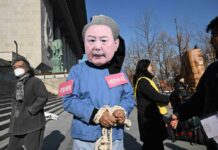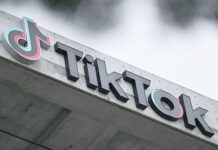NEW YORK (BLOOMBERG) -Taming inflation is a major challenge facing the post-pandemic world. After governments spent freely to offset the economic fallout of the COVID-19 pandemic, prices began to climb at the fastest pace in decades, and central banks embarked on the most aggressive and synchronized monetary policy tightening in 40 years. While inflation has eased since its peak, the fight continues.
How is inflation measured?
At the most basic level, inflation is an increase in overall prices in an economy over a period of time – monthly or annually, typically – and an accompanying decrease in purchasing power. One common way to measure it is by tracking the change in the cost of a basket of goods purchased by a typical household, including food, housing and basic services. Independent central banks consider it their most important mission to keep inflation in check. They set interest rates and use other policy tools to try to keep inflation at what’s seen as a healthy rate. In much of the developed world, including the US and the European Union, that ideal rate is seen as 2 per cent.
Is inflation always a bad thing?
No. In a growing economy, some inflation is to be expected as wages rise and demand for goods and services increases. (A general decline in prices, or deflation, is a sign of a weak economy.) The key issue is the rate of inflation. If the pace of price growth surges above that of wages, the average person’s purchasing power is reduced, and households and the broader economy suffer.
Is that what happened with prices and wages?
Yes. Of 34 member countries of the Organisation for Economic Co-operation and Development with available data, 30, including the US, faced a decline in real wages of about 3.8 per cent on average in the first quarter of 2023. Workers were hit hardest when inflation peaked in the year through mid-2022, when US real wages fell the most in about 25 years, according to the Federal Reserve Bank of Dallas. Leading economists surveyed by the World Economic Forum in 2022 warned that rising prices would prompt social unrest in low-income countries, and that year marked a wave of protests over the surging cost of living across 148 countries, according to the non-profit German foundation Friedrich-Ebert-Stiftung.

What drives inflation?
Broad inflationary pressure can come from three channels: supply, demand and expectations. Disruptions in the supply of goods and services have a direct impact on their prices. Demand-side pressure can come when the government increases the supply of money by spending more or taxing less, or when the central bank cuts interest rates. If demand exceeds the economy’s production capacity, inflation is the likely result. As for expectations, the big concern among central bankers is that once inflation becomes entrenched, it becomes self-reinforcing. That’s what happened in the US in the 1970s and early 1980s, until the Fed under Paul Volcker raised interest rates as high as 20 per cent, triggering two recessions, to finally wrestle prices lower.
What sparked inflation this time around?
There was a supply shock in the early days of the pandemic as Chinese factories closed, transport of goods slowed and manufacturers found themselves missing key parts. In many cases, higher costs were passed along to consumers. The post-pandemic recovery increased demand for energy, which coincided in Europe with lower output from wind turbines and a shortage of natural gas. As a result, electricity prices more than tripled in the second half of 2021. There was a second supply shock after Russia, facing sanctions following its invasion of Ukraine, curbed exports of natural gas to Europe. On the demand side, pandemic relief programs in many countries poured trillions of dollars into economies, and central banks unleashed a wave of monetary easing, driving spending and investment.
How do inflation expectations become self-reinforcing?
If business owners expect inflation to remain higher than normal, they raise prices. Facing higher prices, workers demand higher wages. That fuels further inflation. In extreme cases, it can trigger what’s known as a wage-price spiral, in which higher pay and higher costs become a loop unmoored from what’s happening in the larger economy. That remains a threat, according to some economists, even though the bulk of inflation is being driven by food and energy prices, not labour costs.
How are central banks fighting inflation?
The primary way that central banks tackle inflation is by increasing the interest rate at which banks lend to each other. The idea is that when borrowing becomes more expensive for banks, they’ll pass that on to companies and consumers, who will borrow and spend less, thereby cooling the economy. But interest rates are often called a blunt tool, meaning it’s hard to use them with precision against whatever is ailing the economy. Raising rates may douse inflation, but it also weakens overall economic growth, and there’s always the risk of overshooting and prompting a recession. – KATIA DMITRIEVA



















































